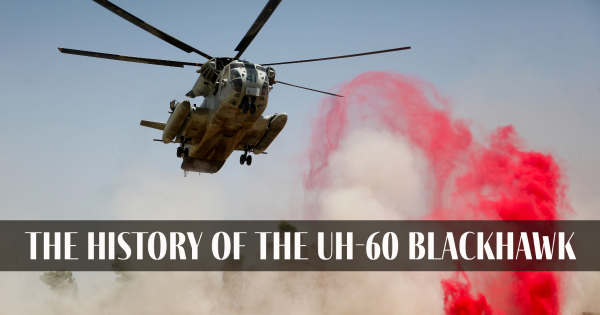Achieving Quality: Key Approaches for UH 60 Helicopter Maintenance
Achieving Quality: Key Approaches for UH 60 Helicopter Maintenance
Blog Article
Navigating Uh 60 Helicopter Rules and Conformity Requirements

Regulatory Framework Review
The regulative structure regulating UH-60 helicopter procedures encompasses a complex collection of requirements and rules established by aeronautics authorities. These laws are developed to ensure the secure and efficient operation of UH-60 helicopters in different environments. The Federal Aviation Administration (FAA) plays a main duty in developing and applying these laws, which cover a large range of functional aspects, including airworthiness requirements, pilot certifications, upkeep demands, and operational procedures.
Conformity with these regulations is important for helicopter operators to maintain the highest degree of security and functional honesty. Failure to stick to these guidelines can cause significant effects, consisting of mishaps, injuries, and regulative sanctions. As a result, helicopter drivers must remain educated concerning the current regulatory developments and guarantee that their operations are in full conformity with all applicable rules and standards.
Airworthiness Instructions and Examinations
In the middle of the regulative structure regulating UH-60 helicopter procedures, a vital emphasis exists on conformity with Airworthiness Directives and conducting comprehensive inspections to support safety and security standards and functional integrity. Airworthiness Instructions (ADs) are released by air travel authorities to attend to dangerous conditions in airplane, consisting of the UH-60 helicopter, and required particular activities to be taken by proprietors or operators. Conformity with ADs is compulsory, and failing to stick to these directives can result in severe effects, including grounding of the aircraft.
Routine assessments are critical to guaranteeing the airworthiness of UH-60 helicopters. These examinations incorporate a variety of checks, from regular day-to-day examinations conducted by pilots before and after trips to a lot more thorough scheduled maintenance examinations accomplished by certified technicians. Furthermore, unique examinations might be needed based on certain conditions or occurrences. By adhering to a stringent assessment regimen, operators can spot and deal with potential concerns without delay, therefore boosting the security and reliability of UH-60 helicopter operations.
Pilot Certifications and Training

Pilot training for UH-60 helicopters is thorough Resources and covers a vast array of topics, including airplane systems, emergency procedures, navigating, and mission-specific training. Furthermore, pilots undergo simulator training to exercise various emergency situation circumstances in a controlled setting. This training aids pilots establish the necessary skills to take care of difficult scenarios successfully.


Moreover, recurring training and specialist development are necessary for UH-60 pilots to stay existing with the most recent guidelines, modern technology, and ideal techniques. By buying pilot credentials and training, operators can improve security, maximize efficiency, and make certain conformity with regulatory requirements in the operation of UH-60 helicopters.
Functional Limitations and Requirements
Pilot credentials and training serve as the foundation for recognizing the functional limitations and needs connected with UH-60 helicopter operations (uh 60). These operational constraints are implemented to ensure the safety and security of the crew, passengers, and the aircraft itself. Operational restrictions may include aspects such as weather condition conditions, weight limitations, altitude constraints, and operational boundaries. It is critical for pilots to be fluent in these limitations to make enlightened decisions during trip procedures. Additionally, conformity demands, such as adhering to details flight paths, communication protocols, and emergency procedures, are essential for preserving operational safety and security and regulatory conformity. Pilots have to stay existing with all operational restrictions and demands with routine training, briefings, and reviews to minimize threats and make sure reliable and risk-free UH-60 helicopter procedures. By prioritizing adherence to these operational standards, pilots can improve the overall safety and efficiency of their objectives while upholding regulative standards.
Emergency Situation Treatments and Compliance Testing
Reliable emergency situation procedures and complete conformity screening are essential parts of preserving operational safety and regulatory adherence in UH-60 helicopter procedures. Routine conformity screening guarantees that the helicopter satisfies all governing requirements set forth by aviation authorities.
In addition, compliance screening might include simulations of emergency situation circumstances to examine the staff's response and the helicopter's performance under stress. By focusing on emergency situation treatments and conformity screening, UH-60 operators can alleviate risks and demonstrate their commitment to security and regulatory compliance.
Verdict
In conclusion, adherence to regulatory structure, compliance with airworthiness instructions, pilot qualifications and training, functional limitations, and emergency situation procedures are crucial for navigating the laws and requirements of running a UH-60 helicopter. uh 60. It is critical for drivers to focus on safety and security and make certain full get redirected here conformity with all relevant policies to keep the airworthiness and functional stability of the airplane
Browsing the regulative landscape bordering UH-60 helicopter operations requires a nuanced understanding of the detailed internet of policies and conformity demands.Conformity with these guidelines is necessary for helicopter operators to keep the highest levels of security and operational integrity.Amidst the regulative framework regulating UH-60 helicopter operations, a vital emphasis exists on conformity with Airworthiness Directives and conducting thorough assessments to support safety standards and functional dependability.Reliable emergency treatments and extensive conformity more helpful hints screening are vital parts of preserving functional safety and security and governing adherence in UH-60 helicopter operations. Routine conformity screening guarantees that the helicopter meets all governing requirements established forth by aeronautics authorities.
Report this page